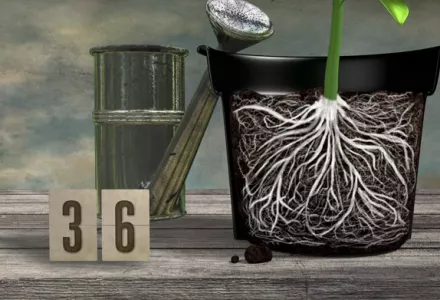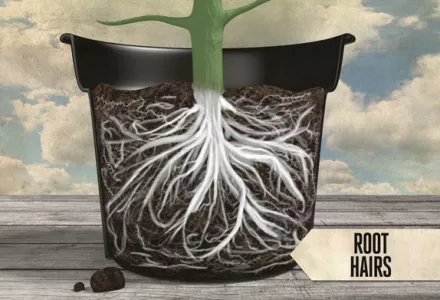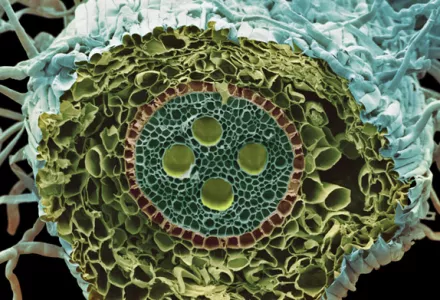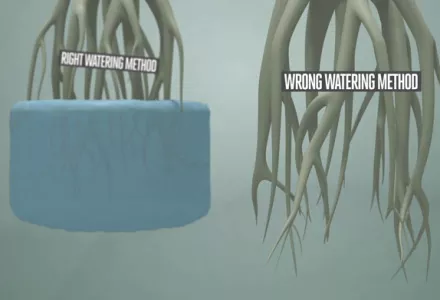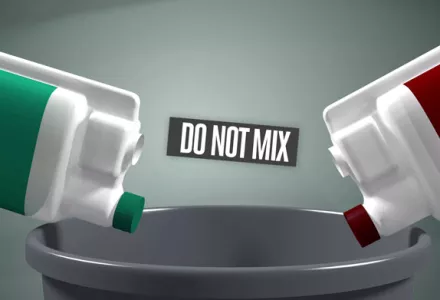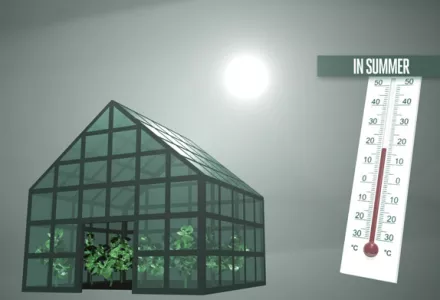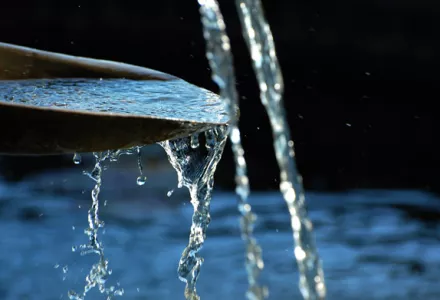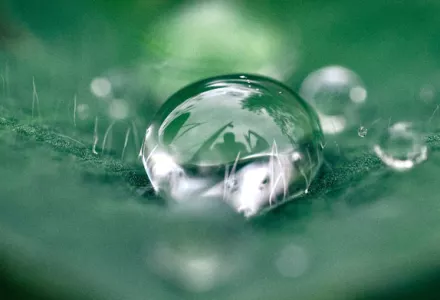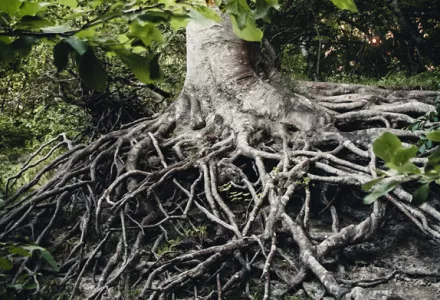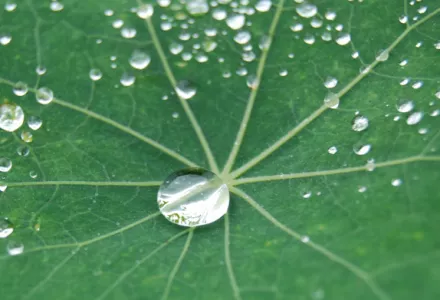What is the best watering frequency for watering to use for my system? In my 30 plus years of working in the green industry, this, or some derivation, is the most asked question I hear. It is also the hardest one to answer. There is absolutely no easy response, but only one right one: when the plant needs it. Both the frequency of water applications and, to a lesser extent, the amount of water to apply, are dependent on many outside variables that further complicate the issue, thus requiring the grower to maintain an ‘eyes on’ approach in his or her growing techniques.
This is the one area in the growing process that makes or breaks a grower. Once we moved out of a natural setting into one of our own design, and began demanding the best performance from those crops we produce, we opened the ‘Pandora’s Box’ of growing. We fundamentally changed water relations between the plant, the medium, and the grower. To fix this problem, the industry has developed a wide variety of mediums and systems that work well with the change. The question ‘Which one is right for you’ is answered entirely on the type grower you are.
Understanding how the pieces act when they come together will give you an indication in what method should work best with your style. We modify our approach to watering to adjust for all the variables our plants may see that are unique to our growing situation, and we will achieve the best results possible. The one variable we cannot adjust for is a grower that does not adapt his or her growing techniques, or design his/her production system around those limitations.
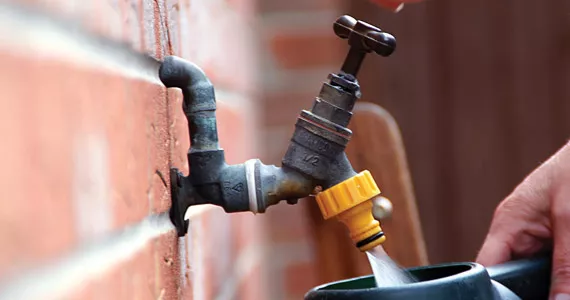
The growth tetahedron
Let’s begin our look at watering by accepting a small fact: The successful completion of a plant crop is predicated on the successful implementation of the growth Tetrahedron (see Figure 1).
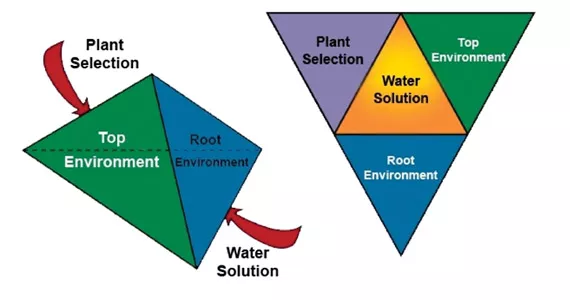
The tetrahedron has as its sides the 4 primary components of achieving growth. Each side is equal in importance and must be optimized to fit with the other sides. As you can see the base of the pyramid is water (as a solution or pure) because it exists in all the sides as well. The Plant Selection will determine both the root environment (and consequentially the system or medium that will be used), and the top environment that will be needed (sides 2, 3 and 4). It takes all four sides to make the tetrahedron and each determines the limits of the others.
The plant or crop is the first side and the first decision. Based on what you want to grow will determine how to grow it; on which root environment and top environment to use is predicated on the chosen plant. In addition, choices are made based on the grower’s knowledge of the system, the crop, strengths and weaknesses, and the remaining two sides. It makes no sense to attempt tomatoes if the environment does not have sufficient light. It makes equally little sense to grow Orchids when the water solution is scarce. While lettuce may be grown successfully in peat or coco, it can be grown as well in an NFT system while decreasing the time, costs, and environmental area it occupies. Just because you can grow leaf lettuce in your grow room, does not mean you can grow head lettuce successfully unless you can drop the temperature in the room to cooler levels. Choose your plant carefully, both type and variety, as all are different and will respond different.
The second side is the Root environment which determines the system to employ in growing. What will best fit with the other sides? The System determines the root environment or medium to use. This is how we not only prepare, present, and store water, food and air for the plant, it also serves to protect and shelter half the plant. Roots work differently then the top but in conjunction with and influenced by the top at the same time. The medium serves to provide support both physically and materially for the plant. The type medium pretty much is determined by the needs of the crop and grower. While soil or soilless mix mediums will provide long term storage of food and water, and physically support the plant making the life of the grower easier (while reducing headaches), for the grower it makes little economic sense to grow lettuce in peat filled containers.
Roots also require the correct proportion of air to water in the medium based on the type plant it is. All roots require oxygen to function. Plants do not have lungs and a true circulatory system to move oxygen from the leaves to the roots, oxygen has to diffuse through the plants tissue. While most carnivorous plants require little air, cacti and succulents require lots of air. Most plants fall in the middle. Steady temperature and correct humidity are key components in root development and function; they are influenced by the type medium used. (Fig 2)
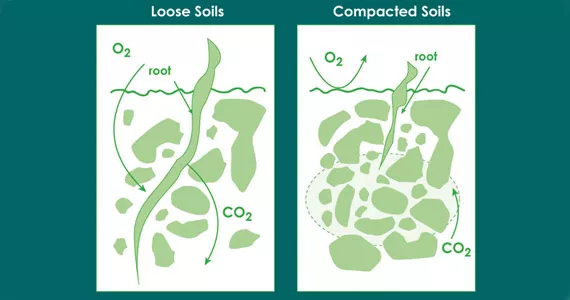
The Top Environment is everything that the plant above the crown or soil line sees. This includes correct temperatures for the particular plant grown. In addition, light intensity (including composition, duration and penetration), the air (its component gases, their movement, and their ratio), and relative humidity are all integral components of this environment (to a lesser extent, this includes pathogens and external stresses as well). While skewed values in any of these values will do great harm, all mitigate each other to an extent. The plant assimilates carbon atoms, the basic building block for life as we know it, only from this side as a constituent of the air, CO2. Its’ not so much the effect of one component that makes the difference, it is how all these components come together that affect the efforts, including driving the final side, Water.
Water, the universal solvent, comprises our final side, the base, and exists as a solution. I refer to it in a broad sense from the individual atom to the complex slurry that moves nutrients to the root surface in a mass flow, and subsequently up the stem to the rest of the plant. Water sees action in all sides, as humidity in the top environment, moving nutrients and supporting other media activities in the medium, directly controlling all activity in the plant, and supplying the necessary nutrients to the final use sites in the plant cells through transporting them.
Water has to be correct for every side, for every side to be correct. It is required in the initial stages of converting light to energy, and the final stage of respiration. It has to match the needs of the plant. Plants that prefer dry feet should not be in an Aquaculture system; aquatic plants should not be held with dry feet. The chemical composition of the water is critical in its performance and must be matched and balanced to work correctly. While a plant will usually adapt to limitations in the other sides of our growth tetrahedron (it won’t be as pretty or as productive, but it can survive and multiply, the only true goal of any plant), it will not tolerate water depletion. Limit the water and its functions decrease or cease, forcing it dormant or killing it outright. Getting it right is the hardest thing to teach and the easiest to screw up.
The thought to take away from this is that remove one side of the Tetrahedron and nothing works, cheat one side and, even if the other sides are right on, you will short-change the crop. A change in any side in quantity, quality, composition, or availability, and you will have to affect change in at least one other side to compensate. Information on all the needs of a plant for each side is pretty much known and achievable with current technologies: the question is ‘is it obtainable by the grower given his time, knowledge, budget, workload, or temper.’
Rules of thumb
Now, let us get down to it by understanding and accepting a couple of key points and rules-of-thumb.
1. To begin, herbaceous root systems require near 100% humidity, ideally, at all times, otherwise the root tips die back. The root tip is the very small end of the root that is divided into 3 zones. The length is variable based on many considerations such as plant variety, temperature, water levels past, and many more. This tip is responsible for the taking up of the vast majority of minerals and water. Root hairs facilitate this uptake and occur in the last or third zone. After the third zone the root tissue begins to lignify and become more impervious to water and nutrients. Kill the tips and the root has to regenerate one before going forward.
2. Roots grow in response to depletion zones, or areas where the root has absorbed all the minerals and water located there. When the material is not replaced, the root extends to find more. Roots have to grow. When nutrients and water are abundant, the root system does not develop in balance with the shoots and a carbohydrate limited condition presents itself weakening the plant. Allow the plants time to dry and thus use up the minerals present. Conversely, hold them too dry and a condition known as chronic underwater or underfeed can manifest. The root tips will also die back limiting further plant development.(Fig 3)
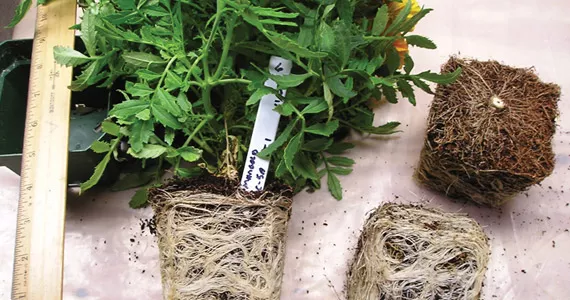
3. Over-watering is accomplished by keeping the roots submerged in water without allowing them to see oxygen. This is more a function of time and drainage and less about volume. With the possible exception of deep-water culture, a neat thing to see but pretty useless for any but the most experience growers, never let roots stay submerged for more then 20 minutes, even then you will get some die-back. Remember, roots require Oxygen to do their job, which comes through diffusion at the root surface. Well drained medium can have water applied for a longer period (ON time) because the excess drains quickly from the medium when the application ceases. Poor drained mediums have much shorter application time (but application rate has to be slower for absorption) because it will take longer to drain the excess water away from the root surface. (Very poorly drained mediums are impossible because the rate of application has to be slow to absorb and with the drainage time, can never be watered throughout). (fig 4)
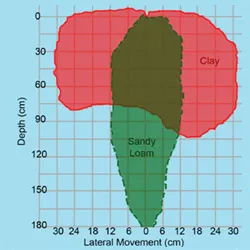
4. The general rule of thumb for determining the root health and irrigation needs of a system is that 1 square meter of bench top, covered with leaves, will use 4-6 liters of water a day. New plants, or where the square meter is not covered totally with leaves, will use about 3 liters a day on average. This is true whether there are 2 plants or 20 in the square meter. Build the system to be able to supply this amount across each watering and for however long you want to go without mixing more. Use this figure to decide how well the plants are working. If it is using less, either the roots are having a tough go, the humidity could be too high, the temp could be too low, and so on.
5. When figuring water cycle on a crop of more then one plant, base times on an average of all the plants. For instance, we want to water most mediums (except aeroponics) when about 50% of the total volume of the water is used or gone. Set automatic systems to turn on when 50% of the crop is ready. To accomplish this, keep everything the same; medium, plant age and size, light exposure, air currents, and so on. Above all else, keep the crops developing equally.
6. With organic or inert medium, water when 50% of the water you applied last time is gone. In some instances, the grower can weigh the container bone dry, water to drainage and weigh again. The difference is how much water the container will hold. Water when the scale reaches half this amount lost. After planting, the same will hold true through the early stages. By then, the grower should be able to tell, as long as they realize that the plant is gaining weight as well. (Fig 5)
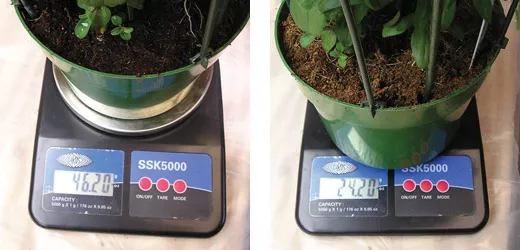
7. In aeroponic systems, you have to be good at judging when the root surface has just lost the free moisture on it while not falling much below 100% humidity (air). This will require constant monitoring especially where the roots are exposed to free air.
8. Roots like the dark and really try to grow away from light. Keep them as lightless as possible in systems that are thin walled PVC, or an air chamber.
9. Remember, in a container with medium and drainage holes, you can not put in too much water, just too long an application. For example; a 5 gallon pot can have 3 gallons applied in 5 minutes or 20 gallons (if the medium does not flush away) but there will be the same amount left in the container ten minutes after stopping application and this is the only important point.
10. Cycles have to be adjusted during the dark period of the lighting cycle because the plant is using much less water. The dark cycle is critical to plant development. This holds true for cloudy days or high humidity periods. Media that holds water (peat, rock wool, etc), seldom if ever need watering during the night as long as the grower adjusts the irrigation cycle to water in the last half hour of light or first half hour. Aeroponics or clay pebbles will need an infrequent application a few times during the night.
Putting it together
Hand watering is the easiest and least expensive of all the systems. This includes everything from holding the hose in your hand to manually tripping a valve that applies water through an irrigation system of drippers, spray stakes or other individual emitters including sprinklers and soaker hoses. This gives the grower the most control as long as they are paying attention and getting the correct amount of water into each container or plant. If a grower is using 7-gallon containers with soil, applying 1 gallon of water will not suffice. Always water until you get at least 20% drainage; this will insure total saturation and wash away accumulated salts. For precise volume applications, you have to use a system that applies a known volume of water to each point.
To accomplish this, automating the system is required. Design the system around the water need. Start with how much water needs to go into a container in the time allotted to insure the roots are not submerged for more then the suggested time. Then, since drippers have depth profiles, pick a type dripper and how many will be required to go into a container to satisfy this need. After that, count the total drippers required for the attempted system and design the pipes and pump to deliver this total amount of volume at the pressure required for the dripper to work correctly. Then size the tank to insure that this amount will be available at each watering, and that satisfies the number of applications that are needed between tank changes. Remember that volume has to be equal at each dripper, so insure that the pressure needed in the entire system and volume supplied is available at each dripper with some margin for error. Also remember that as pressure goes up, volume out decreases. If you need to supply a minimum of 40 psi in a system and 500 gallons a minute, you will have to use a pump that is capable of this.
For extreme systems like deep-water culture, the need is for root zone water change outs to keep the water solution clean and air saturation must be maintained through aeration technologies like air pumps. Aeroponic systems have to meet the same needs but always have very short off times and have to be run in the dark. The same holds true with Hydroton or pebble systems, but the off time is longer since the aggregates will hold water on the surface allowing for a longer period of high humidity seen by the root.
That is it, all the systems in the market today fall into 2 categories, manual and automatic. The clock is the important consideration and the labor needed to water. Everything else is about plumbing. In simplest terms, the goal is to deliver water to the root zone on time and on target, everything else is convenience or accuracy. So there are 2 categories and many systems. The simplest are the best.
Over the top watering by hand is the best especially for leaching salts, but can be accomplished with spray stakes, as long as all containers can be watered. Flood and drain is not this authors favorite way to apply water solution but works to an extent, but should always include a regular leach session to reduce the salts that do not drain from the container but move upward. Drip emitters are great in mediums that are not too airy, but depend on lateral movement to saturate the root zone and do little to rinse out the medium. Sprinklers are great but only if the crop (and building) can handle it and have tight restrictions on how since disease and missed containers are often results of this system (also wastes much water to the air and as run off). Spray stakes really offer the most adaptability for most mediums, excluding air where the emitter should be a mist nozzle. They can be used to disburse water across a medium, ensuring equal watering and good leaching.
While it is hard to condense 30 years of learning into one short article, if these guidelines are followed, the results in plant performance, money saved, and general grower success will be realized. The key element in this entire discussion is the grower. It is the grower that affects the entire system and succeeding or failing is entirely in their hands.

